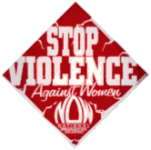|
被禁止的性行为与性暴力
|
|
性暴力:
强奸:
历史记载
2
|
|
 |
|
国家妇女组织,
美国的一个大型而有影响力的女权组织,该组织一直致力于反对对妇女的一切形式的暴力。欲参考详情,请点击图标。
|
|
The National Organization for Women (NOW),
a large and influential feminist group in the US, continues to oppose violence against women in all of its forms. For details, click on logo. |
|
|
在古罗马和其它许多古代文化里,强奸一个女人是最严重的一项反对这个女人的家庭的罪行。她本人没有同意并不是决定性的问题。正如我们在神话的举例里已经见到的一样,绑架和强奸常常关联在一起,并且把这个女人从她的家里绑走是犯罪中最为严重的情节。这名罪犯可能被判处死刑,不过也可能给这个女人的父亲和丈夫赔偿一笔钱。强奸处女曾经是严重的犯罪。从法律的界定来看,不可能有强奸妻子、妓女和奴隶的。她们没有拒绝性求欢的权利。
美国内战之后,废除奴隶制之前(1861-1865),南方各州仍然保留了旧法律体系。因而,女黑奴仍就任凭白人主人随意的性宣泄,并且,任何的反抗都无济于事。但是,强奸白人妇女的男黑奴常常未经公正的法庭审判就会被处死。然而,因强奸黑女人受到控告的男人根本就罕有被起诉的。长久以来,美国执行强奸的法律一直严重失衡:整个20世纪里,在美国因强奸被处死的男人中,有90%是黑人。
然而,这还不是唯一不公平的方面。执行强奸的法律还有另一个严重的缺陷:法官和陪审团过去习惯于用怀疑的态度对待强奸指控,因而他们始终就不是公平的。时常的情形是,在法庭上,法官和陪审团并不相信女受害人,而且事实上,他们会驳斥她们。他们质疑女受害人的人品和性道德,而且会当庭细查每一个私人生活的细节。简而言之,强奸的受害人处于被这个法律系统第二次伤害的危险之中。
1960年代,也正是这个时候,一个重新鼓舞人心的专门针对这些法律问题的妇女运动风起云涌,于是,就取得了显著的进步。例如,在1970年代早期,国家妇女组织(the
National Organization for Women, NOW)[1]在美国发起了一场运动,把强奸重新定义为暴力犯罪,并且在全美建立起性攻击危机处理中心(Rape
Crisis Center),在这些中心里,性攻击的受害人能够得到帮助、支持和建议。此外,在美国以及其它许多国家,强奸配偶和强奸妓女也成了犯罪行为。
.
国家妇女组织, 美国的一个大型而有影响力的女权组织,该组织一直致力于反对对妇女的一切形式的暴力。欲参考详情,请点击此处。
|
|
Prohibited Sexual Behavior and Sexual Violence |
|
Sexual Violence: Rape: Historical Notes 2 |
In ancient Rome and many other ancient cultures, raping a woman was, above all, a crime against her family. Her lack of consent was not the decisive issue. As we have seen in the mythological examples, abduction and rape often went together, and taking the woman away from her family was the most serious aspect of the crime. The offense could be punished by death, but it could also consist in a fine payable to the woman’s father or husband. Raping a virgin was an especially serious crime. Wives, prostitutes and slaves could, by legal definition, not be raped. They had no right to resist sexual advances.
Before slavery was abolished in the US after the American Civil War (1861-65), the Southern states had kept their old laws. Thus, black female slaves remained sexually accessible to their white masters, and any resistance was futile. However, black men who raped white women were executed, often without an impartial trial. White men accused of raping black women were rarely
prosecuted at all. For a very long time, the enforcement of American rape laws remained seriously imbalanced: Throughout the 20th century, 90% of the men executed for rape in the US were black.
This was not the only injustice, however. The enforcement of rape laws had another serious flaw: Judges and jurors were used to treat rape accusations with suspicion and thus were not always impartial. All too often, women victims were not believed and were, in fact, attacked in court. Their character and their sexual morality were called into question, and every detail of their private lives was publicly scrutinized. In short, the victims of rape were in danger of being victimized a second time by the legal system.
When, in the 1960s, a newly invigorated women’s movement began to address these issues, some notable progress was made. In the early 1970s, for example, the National Organization for Women (NOW) began a campaign in the US to redefine
rape as a crime of violence and to set up
Rape Crisis Centers around the country, where victims of sexual assault can find help, support, and advice. Moreover, in the US and many other countries,
the rape of a spouse and that of a prostitute also became crimes. |